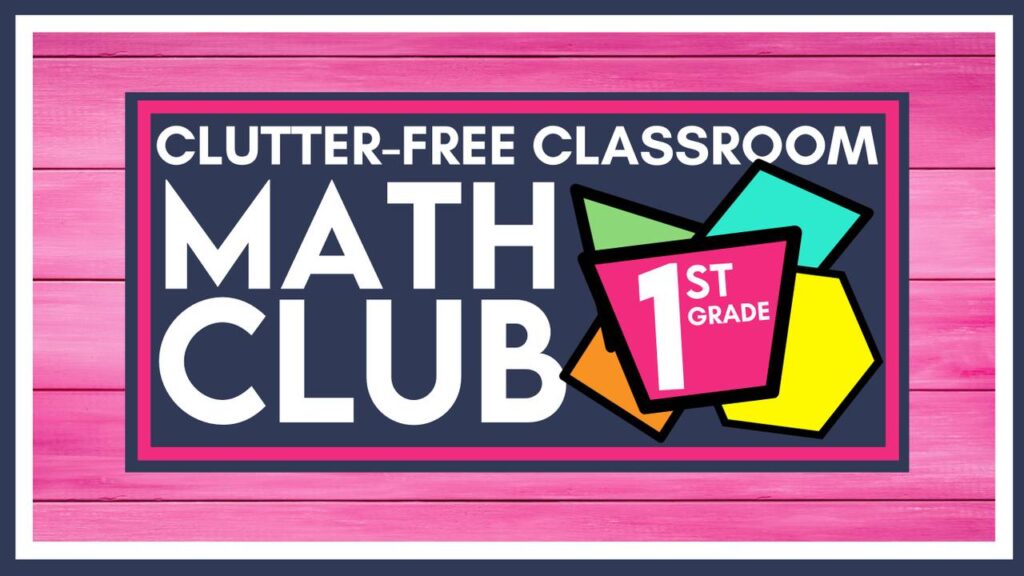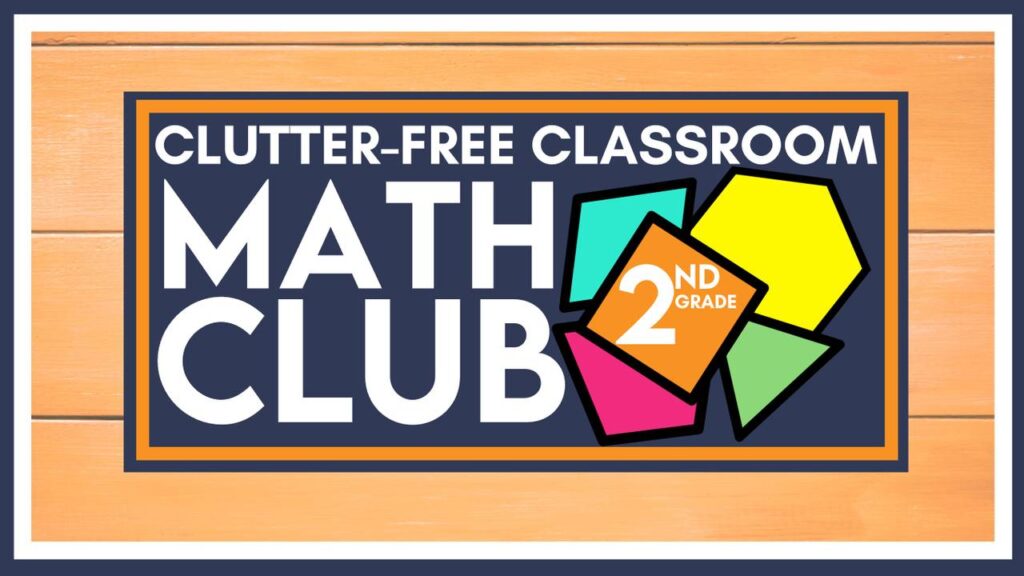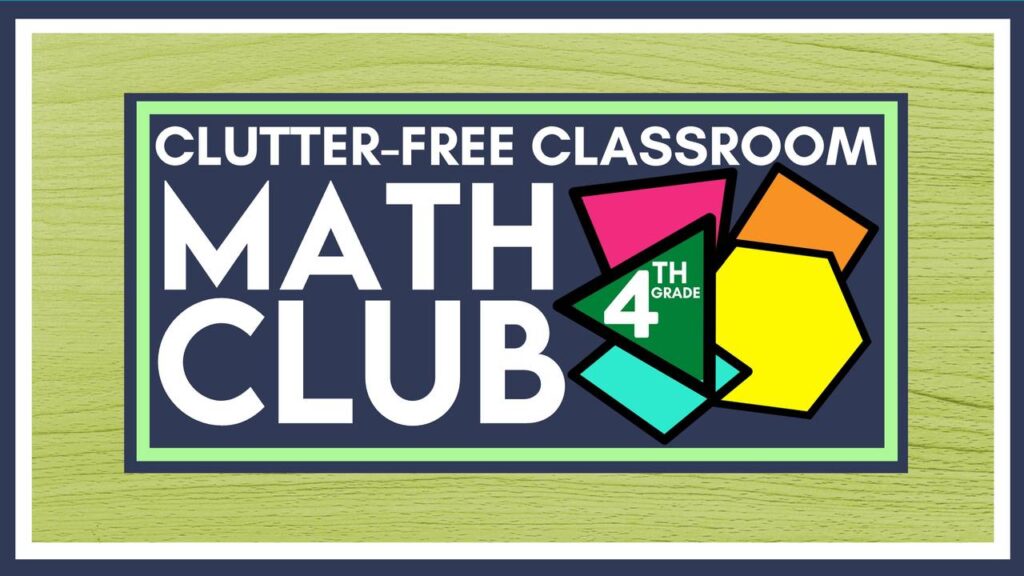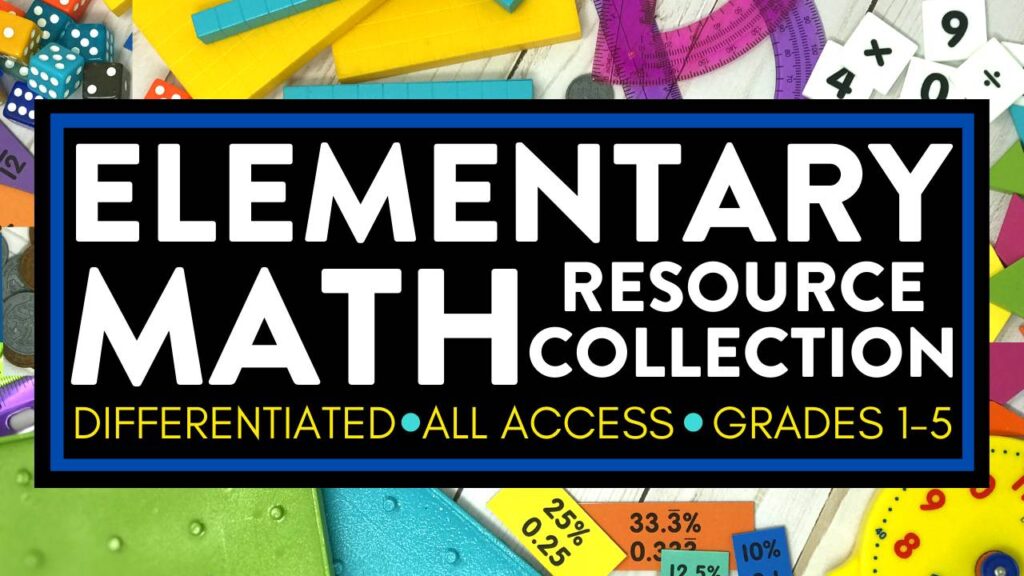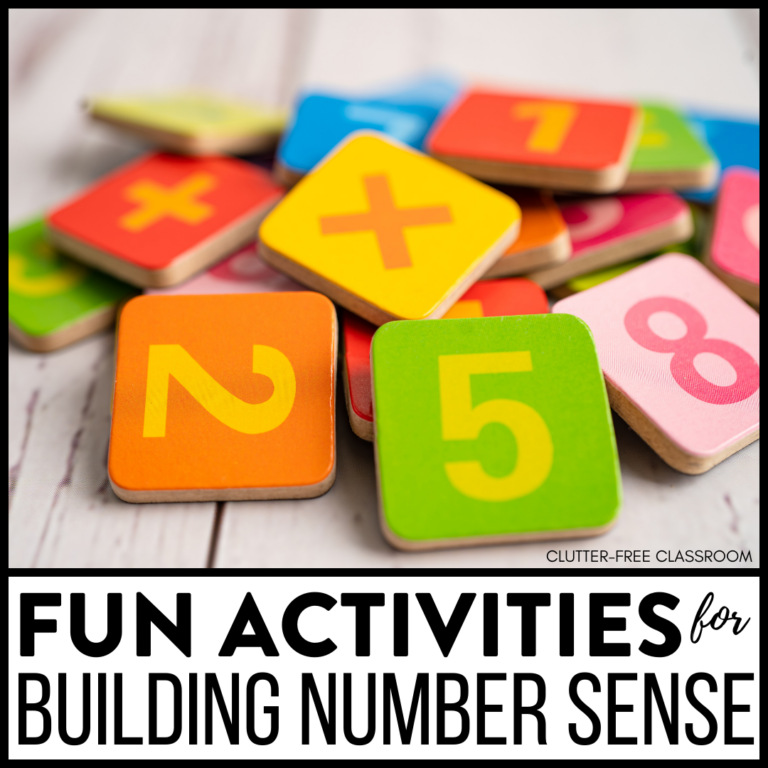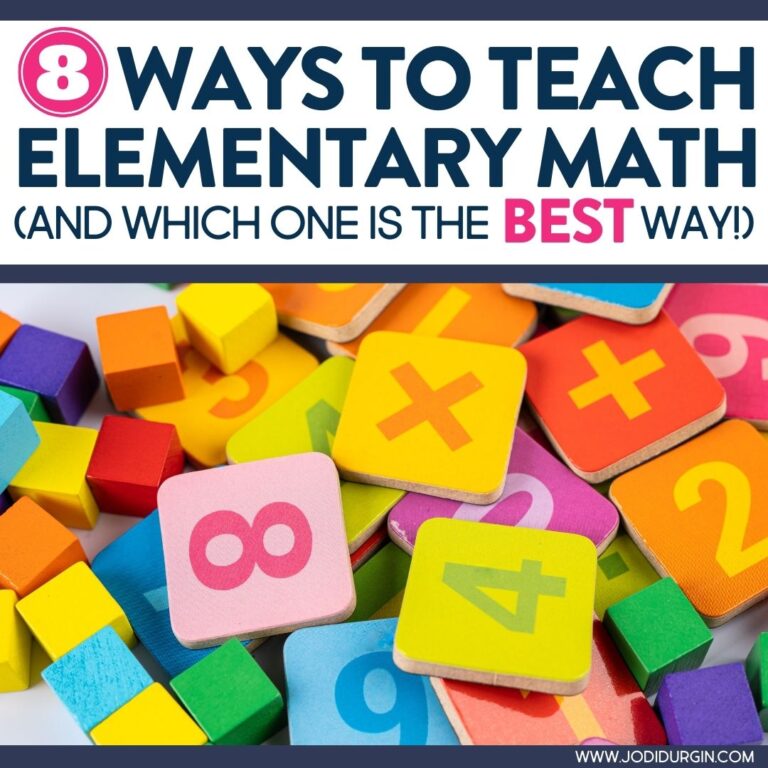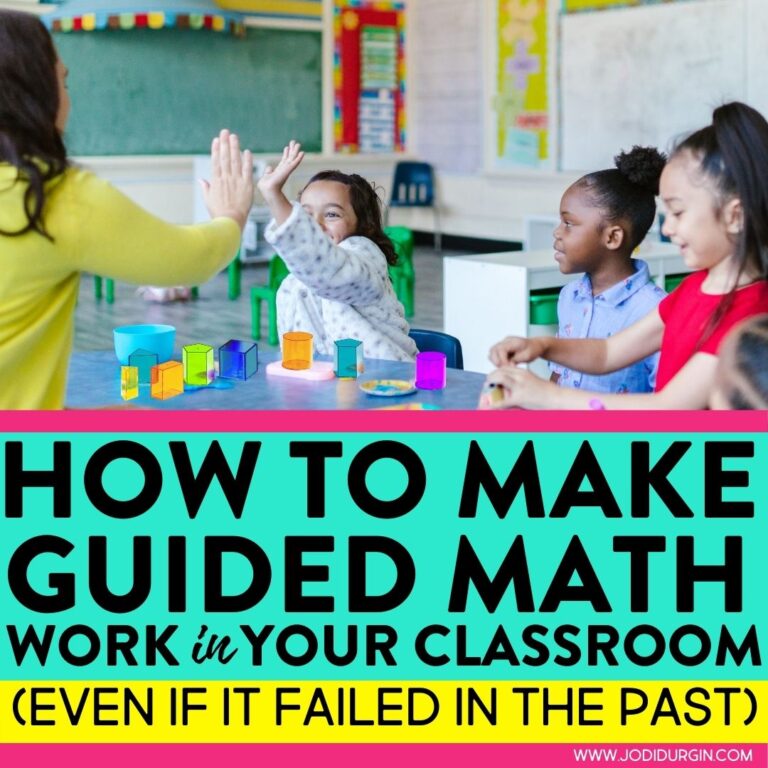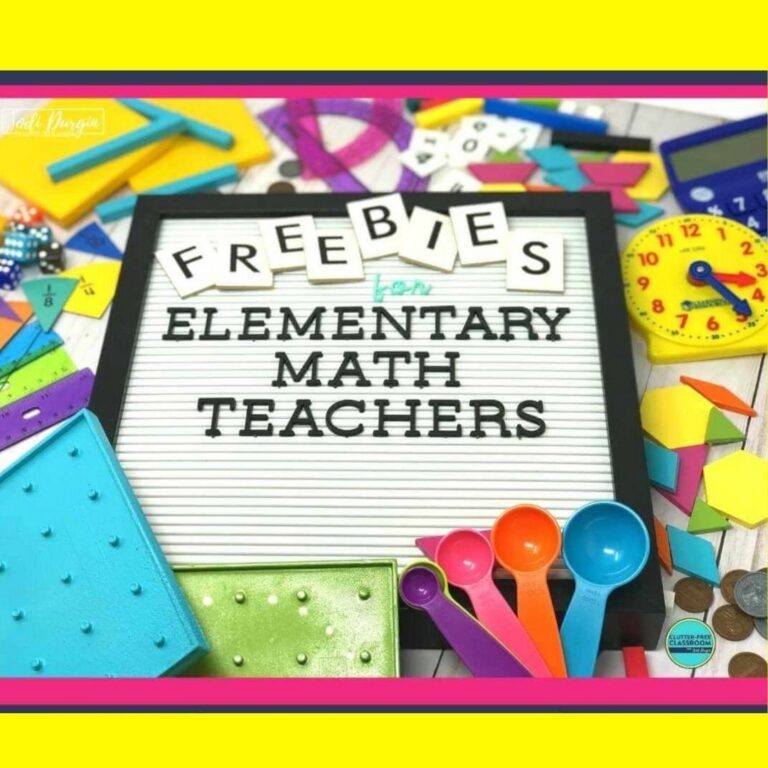Differentiation is important across disciplines, but this blog post will focus specifically on differentiation in math.
In addition to implementing math accommodations and modifications to support students with IEPs or 504 plans, we must also provide differentiated instruction to our whole class. There are tons of great differentiation strategies to assist us with this. As educators, we know that differentiated instruction in the classroom is an essential component of best practice teaching.
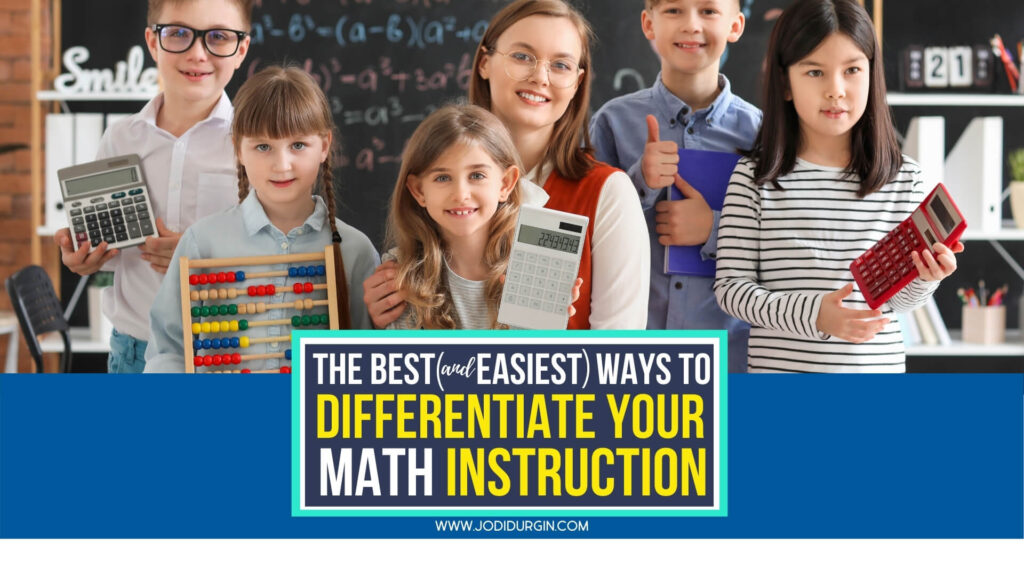
But here’s the thing: differentiation in math, in particular, can be challenging for teachers. This is due to limited resources and time to dig into the vertical alignment of each math concept and skill. Luckily, a Guided Math Workshop framework accompanied by my Elementary Math Resource Collection makes it possible!
This blog post will answer the following questions about teaching elementary math:
- What does differentiation mean?
- What is differentiation in math?
- Why is differentiation important in the classroom?
- What does differentiation look like?
- Can you share some tips for how to differentiate a math lesson?

What is Differentiation?
Differentiation is the concept of tailoring instruction to meet students’ individual needs. Educators can differentiate content, process, products, or the learning environment. Teachers use data from formative assessments to inform their instruction in order to deliver appropriate lessons and activities.
What is Differentiation in Math?
Differentiation in math is the idea of providing individualized math instruction to students. This instruction is based on math exit tickets, math benchmark assessments, other formative assessments, and teacher observations during whole group and small group instruction.
Why is Differentiation Important?
Differentiation is important because it helps all students within a classroom reach their highest potential. This is done by way of engaging and appropriate learning experiences. These experiences challenge and support them on their path to developing a deep understanding of the content. It is especially important to differentiate instruction in math.
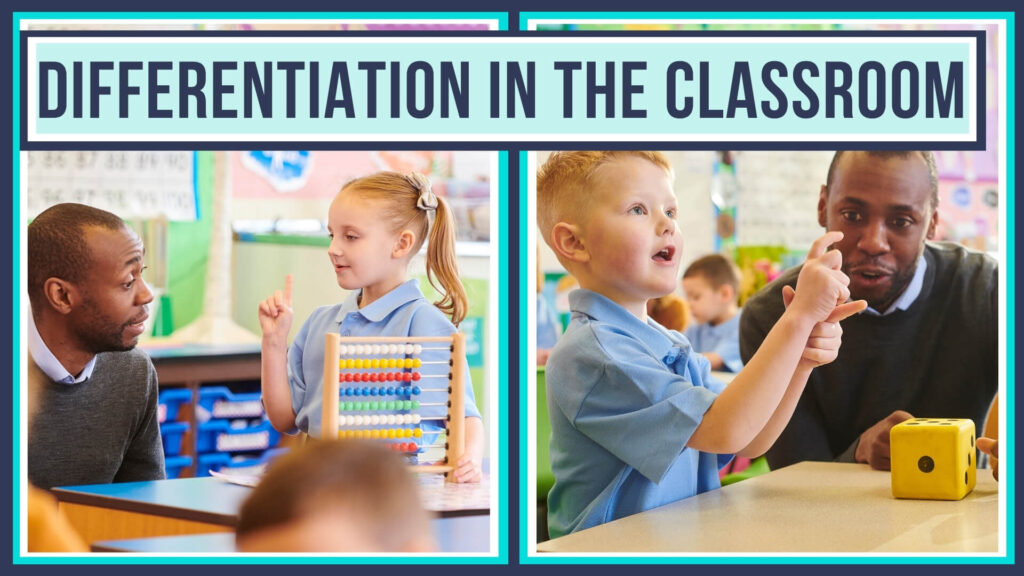
What Does Differentiation Look Like in the Classroom?
As I mentioned earlier, there are 4 ways to provide differentiated instruction: content, process, products, and environment. Differentiated instruction in math can look like a:
- couple of students paired together where one peer reads aloud math word problems to their partner
- group of students working on a version of a word problem worksheet that has simple sentence structure
- group of students working on a word problem task that is accompanied by visuals
- small group of students meeting with the teacher to be retaught a math skill
- small group of students meeting with the teacher to participate in an extension math activity
- variety of different colored folders at a math center that each have a different activity based on students’ needs
- variety of different project based learning tasks being offered based on students’ interests.
- student having an individual math tool kit they have access to as needed
- student having extra time to complete a math project
- class being able to choose how they want to show that they have mastered a math skill
- class of students choosing whether they work independently or with a partner
- student working on the floor with a clipboard.
- student standing while working
- class of students sitting on the rug next to a learning partner
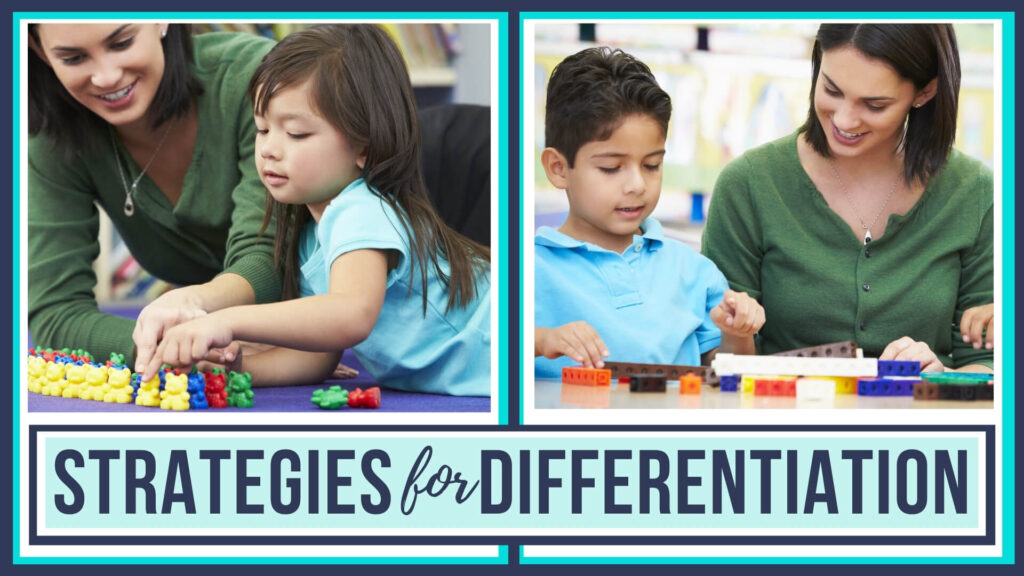
5 Strategies for How to Differentiate Math Instruction
Differentiation in math is important, but it can be intimidating at first. How can we meet the needs of all of the mathematicians in our classroom? Here are 5 suggestions to help you get started with implementing differentiation in math:
- Utilize the Math Workshop with Guided Math framework for your math block. This structure provides lots of opportunities to offer differentiation in math. Learn how to implement this framework in my Guided Math Workshop course (coming soon!).
- Meet with small guided math groups chosen based on students’ performance on formative assessments. This is a great time during your math block to offer differentiated instruction.
- Strategically partner students within math groups so they get the support and modeling they need.
- Offer math manipulatives when students are problem solving.
- Utilize technology to help you offer personalized education opportunities. For example, Xtra Math is a good math fact fluency tool. It individualizes what students are working on based on their performance each day.
Math Resources for 1st-5th Grade Teachers
If you need printable and digital math resources for your classroom, then check out my collections below!
Try a Collection of our Math Resources for Free!
In closing, we hope this information about differentiation in math is helpful! Next, we would love for you to try these math resources with your students. They offer elementary students opportunities to practice grade level concepts and skills in fun and engaging ways. They will also support you with math differentiation. Download worksheets (along with other math freebies) in our free printable math activities for elementary teachers.
Check out these other math resources!
- 1st Grade Math Resources
- 2nd Grade Math Resources
- 3rd Grade Math Resources
- 4th Grade Math Resources
- 5th Grade Math Resources


